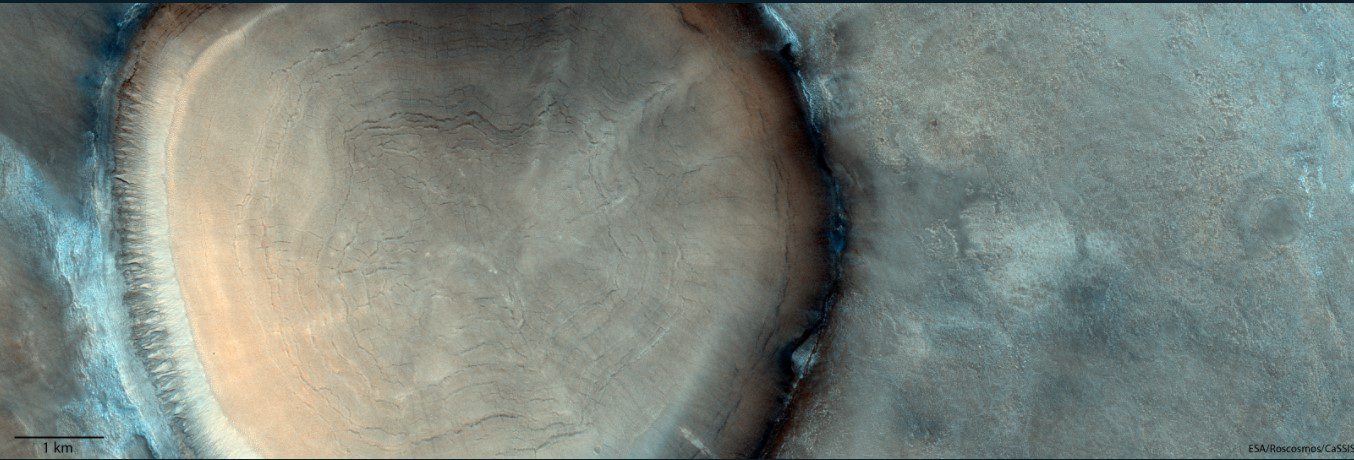Is this a close-up of a tree stump or an orbital view of a crater? At first look, it may not be easy to tell. However, this picture of a crater on Mars supplies planetary scientists with much the same climatic history data about the Red Planet that tree rings provide here on Earth.
This image was captured by the Colour and Stereo Surface Imaging (CaSSIS) camera on the ESA/Roscosmos ExoMars Trace Gas Orbiter (TGO), which arrived at Mars in 2016 and started its complete scientific mission in 2018.
This unnamed crater is situated in Acidalia Planitia’s extensive northern plains. This plain is located north of Valles Marineris, and it features the famed Cydonia area (which has the “Face on Mars” butte …and which does not genuinely resemble a face, as well as extensively cratered highland topography.
So, What Makes this Crater so Unique?
According to ExoMars mission scientists, the crater’s interior is likely made of ice-rich material, and the quasi-circular and polygonal fracture patterns could be the result of seasonal temperature changes that cause cycles of expansion and contraction of those materials, eventually leading to the formation of fractures.
The water-ice-rich soil would have been set down during a point in Mars’ past when the planet’s spin axis inclination enabled such deposits to develop at lower latitudes than it does now. Mars’ tilt, like Earth’s, causes seasons, yet unlike Earth, its tilt has altered considerably over extended periods.
Possible gullies may also be seen around the crater rim on the left.
Mission scientists states:
“Understanding the history of water on Mars and if this once allowed life to flourish is at the heart of ESA’s ExoMars missions. The spacecraft is not only returning spectacular images, but also providing the best ever inventory of the planet’s atmospheric gases with a particular emphasis on geologically and biologically important gases, and mapping the planet’s surface for water-rich locations.”
The ExoMars orbiter will also serve as a data relay for the second ExoMars mission, including the Russian-built Kazachok lander, which will deliver the Rosalind Franklin rover to Mars’ surface. The mission is scheduled to start in September 2022. When it arrives on Mars in 2023, the rover will investigate another area of Mars that has yet to be revealed and is suspected of having previously contained an old ocean, as well as seek for indications of life underneath.














Leave a Reply